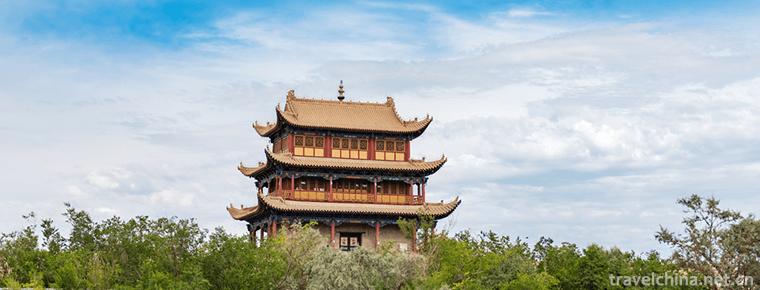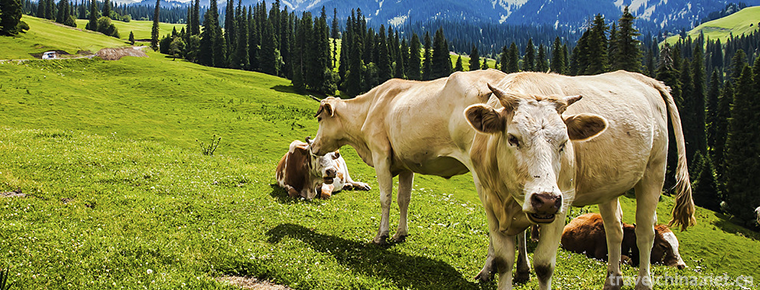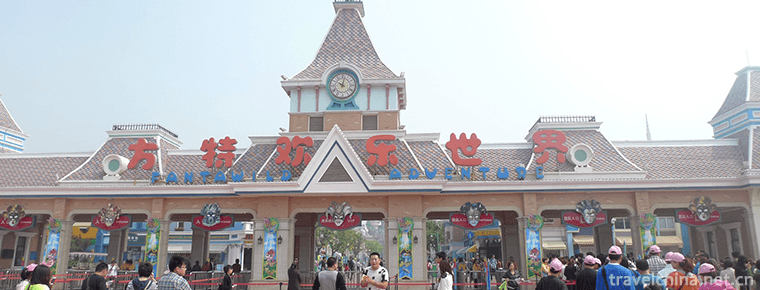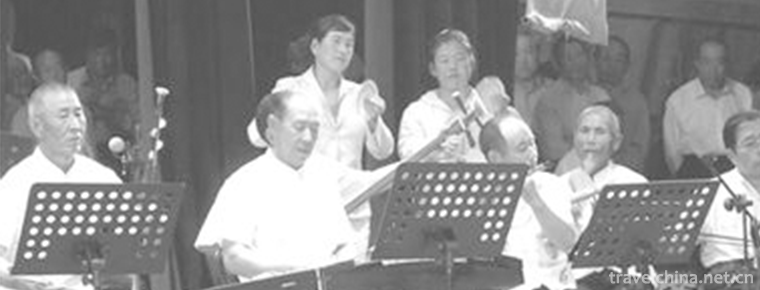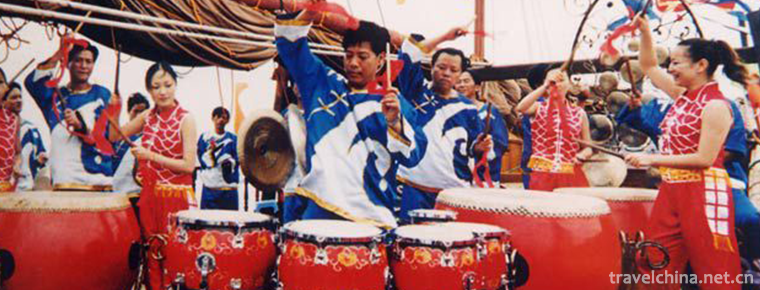Panhu Legend
Panhu Legend
Panhu and Xinnu myths and legends are abbreviated as Panhu legends. They originated in Luxi County, Xiangxi Tujia and Miao Autonomous Prefecture, Hunan Province. They are the main contents of Panhu culture. Spreaded in the Miao areas of Western Hunan and northeastern Guizhou, as well as in southeastern China, it is an extremely important material and precious cultural heritage in the treasure house of Chinese folk literature (oral literature).
In May 2011, the Panhu Legend declared by Luxi County of Hunan Province was listed in the third batch of national intangible cultural heritage list with the approval of the State Council.
historical origin
The rudiment of legend
Shanhai Jing is one of the oldest cultural classics in China, totaling eighteen volumes. It is not written by one person at a time, but by people between Zhou and Qin Dynasty (the first emperor). "Shanhai Jing" Volume 12, "Hainei Beijing" describes what Dayu saw and heard in the Tiangong, including a paragraph: "
Some people call it Big Bang Bo, Pug Ge. There are dogs in the east. "The dog feuds the country and calls it the Great Rongguo, which looks like a dog. There was a woman who knelt and fed. There are Wenma, who is still alive, and whose eyes are like gold. They are called "lucky quantity" and multiply their longevity by a thousand years.
This ancient passage, expressed in vernacular, means that Dayu saw a god named Da Xingbo holding Changge on his way to the Tiangong Palace and the rivers and mountains of the earth under the guidance of the immortals. To the east of him there was a dog-feudal country, also known as the dog-army country, where people looked like dogs. Next to her was a woman who was kneeling down and eating a glass of wine in honor of her husband. The dog is a state-owned horse with white coat, red mane and golden eyes. This kind of horse is called Jixing horse, and the rider can live to a thousand years. This is the earliest description of "a man who looks like a dog" in Chinese classics, and it has become the rudiment of "Panhu Legend" in later generations.
Complete Legend
In the Jin Dynasty, Wenxi (now Shanxi) from Hedong, Guo Pu (276-324 AD), a literary and exegetical scholar, commented on The Book of Mountains and Seas and wrote the book of Xuan Zhong Ji, saying, "Dog Feng's people, Emperor Gao Xindi had beautiful women and remained unmarried. The emperor said,'Those who are in trouble, their wives are beautiful women, and they are closed to 300 households'. The name of Emperor's dog protects him, and kills him in March with his head. The emperor thought that the untrained people were wives and daughters, who went to the Council for 21,000 miles and got the land in the sea and sealed it up for 3,000 miles. Boys are dogs, girls are beauties. It was declared the Republic of Dogs.
Ancient Yi people in Liang, Han, Ba, Shu, Wuling, Changsha, Lujiang and other counties. They use rice dumplings, fish and meat as food, knock on the trough plate, sing folk songs and offer sacrifices to their ancestors. This custom has been handed down to this day. Therefore, the world calls it "Red Condyle Cross Skirt, Panhu descendants".
Evolution of Communication
After the Han and Jin Dynasties, Fan Ye (398-445), a historian and essayist of the Southern Dynasty Song Dynasty, compiled various theories into The Book of the Later Han Dynasty. Among them, Nan Man Zhuan recounts the legend of Panhu. Since then, the story of Panhu is similar to that of Yao, Miao and Li in southern China. They are spread among other nationalities. The worship of Panwang by Yao people is very pious. People's life and death, rich and poor, are under the control of Panwang. Whenever there is a drought, we must pray to the King Pan, and carry his portrait to parade in the fields, inspect the crops. Some of the Yao people's "Migration List" (also known as "Cross Mountain List") contains the legend of Panhu (or Panhu, Panhu). The Miao people have Panwang Shu, which is sung among the Miao people. It is said that Panwang is the creator of various cultural relics.
Modification and modification
She people call themselves "Shanha". "Ha" means "guest" in She language, and "Shanha" means a person living in a mountain or a guest living in a mountain. There are two pronunciations of the word "She" (Note. See Appendix), either reading "Yu" or "Luxury". Jiyun: "She, fire is also..." Tang Liu Yuxi's "Bamboo Branch Ci" said: "Long knife and short hats to burn her." Li Shangyin's poem "Giving the Field Man" contains the phrase "burning the lotus and reflecting the distant mountain scenery, cutting trees and spreading the sound of deep valleys". Song Fan Chengda's "Lao She Tillage" said: "She Tian, the land of slash and fire cultivation in the Gorge."
In 1958, the "Fujian Ethnic Minority Social History Investigation Group" was formed by the Institute of Ethnic Studies of the Chinese Academy of Sciences, the Central Academy of Nationalities, Peking University, Xiamen University, the Central Conservatory of Music and the Fujian Provincial Cultural Bureau. It took three years to preliminarily complete the social history investigation of the She Nationality and the compilation of the brief history of the She Nationality (preliminary draft). In 1979, after absorbing the valuable opinions of the History Department of Fujian Normal University, the History Department of Hangzhou University, the Zhejiang Minority Normal School and the She nationality cadres and masses in the She nationality area, the book A Brief History of She Nationality was revised and published on the basis of the preliminary draft. The Book affirms that the She nationality is a national minority with a long history in China. By the beginning of the seventh century, the She nationality had settled in the border areas of Fujian, Guangdong and Jiangxi provinces. But were they indigenous or migrated from other places? When was the earliest time to settle down? These problems are confined to historical data and are difficult to assert or speculate. According to the aforementioned historical facts recorded in Shanhai Jing, Sou Shen Ji and Hou Han Shu, as well as the confirmed historical facts in A Brief History of She Nationality, I have reason to believe that Panhu Legend is entirely the creation of Han Nationality, and the people of She Nationality borrowed Panhu Legend later to compile the mythological stories of the primitive ancestors of the nation.
The Panhu legend of She nationality is quite close to the record of Sou Shen Ji. The main transformation points are changing into feudal princes, giving surnames to emperors and Fuding vouchers.
artistic characteristics
primary coverage
Legend has it that in ancient times, Emperor Gao Xin's daughter, Xin Daughter, eloped and married Panhu, a hero of the Miao nationality, who fought against the enemy, and came from the capital to create a home and multiply in the barren land of the West Bank of the middle reaches of Yuanshui River. Later, Panhu was murdered and thrown dead in Yuanshui. Xinnu searched for her husband's body along the Yuanshui River. She cried and dried up her tears and died of gas. She stood on the Bank of the Yuanshui River and was later called "Xinnuyan". The Miao people in Western Hunan respect Xinnu as the "godmother" and Panhu as the "priest" and hold "Xinnu Temple" and "Panhu Temple" as sacrifices.
Manifestation
Luxi, as the birthplace of Panhu cultural events, besides the folklore stories, a large number of geomorphological entities are related to legends, but also retain a variety of folk customs and cultural relics of Panhu worship. In the area of Xinnu Village, Baisha Town, Luxi County, there are dozens of geomorphic entities associated with myths and legends, such as Panhu Cave, Panhu Temple, Xinnuyan and Xinnuan, which are rare in China. As an ancient myth and legend, originally rooted in the soil of farming culture, it gradually evolved into various folk images of Panhu worship. Ethnology, religion, linguistics, sacrifice, dance, medicine and funeral, which derived from myths and legends, were widely spread in Luxi.
Current situation of inheritance
Panhu and Xinnu's mythological stories originated in Luxi and spread in various villages and Liangjiatan, Bashiping, Tanxi and Xixi towns, and concentrated in the Xinnu Village area of Baisha town. However, as a major international topic of Panhu Cultural Events, Panhu has attracted the attention of experts and scholars because of its wide spread in the region. Panhu culture spreads in the southeast of China and Southeast Asia. Because of the death of the older generation, few people can fully understand the legends and stories. There are six representative inheritors of Panhu legend, and each of them comes from Xinnu Village, Luxi County. From this point of view, the influence of Panhu legend is limited. Moreover, with the development and changes of society, many young people have gone out of the mountains and traveled in cities far away from their homeland. They have lost interest in the ancient myths and legends of their homeland, which makes the inheritance of Panhu legend more difficult. Sacrificing Panhu and Xinnu is the most solemn activity of the Miao people in Luxi, while Laoshi is the main part of the sacrifice. Now few Laoshi who know the procedure of dancing incense are left, and they are old enough to lose the ability of performing.
In Luxi County, only one person, Zhang Qirong, can independently complete a whole set of sacrificial rituals for dancing incense, and there are few successors to preside over dancing incense. Zhang Qirong, a nearly 70-year-old man, has taught his two sons this course. He has also used festivals, weddings, funerals and large-scale fragrance dancing activities organized by himself to perform more than 1000 performances for the masses, and trained more than 50 people in Miaozhai. It is hoped that they will inherit this unique folk custom and skill from generation to generation.
Inheritance Significance
The important value of Panhu legend lies in the following aspects:
I. Historical Value
Panhu and Xinnu myths and legends occur in the transition period from matrilineal society to patriarchal society, reflecting the family characteristics and social nature of the transition from the dual family stage of matrilineal society to patriarchal society in primitive human society.
It is widely spread and rich in content. Many experts and scholars in history have been discussing it tirelessly. At the same time, it has become an international research topic.
2. The Value of Folklore
Panhu and Xinnu myths and legends concentrate on folklore, mythology, religion, linguistics, oral literature and other cultural phenomena. At the same time, they derive many cultural phenomena such as dress, dance, ballad, medicine, craft and folk customs, which deserve further study.
3. National cohesion
Myths and legends originated in ancient times, but because of their stability, inheritance and functional characteristics, their original thinking, original viewpoints and external performance of sacrificial rituals and artistic forms are relatively mature and can be preserved for a long time and passed down from generation to generation. As a traditional folk culture with a long history, it has been the basic symbol of national identity for thousands of years and an important link to maintain national unity.
IV. Needs for the Development of Tourism
Some folk customs in Panhu cultural events, such as dancing incense, Miao flower-picking, chiseling flowers and teleplay, can be developed into tourist crafts and artistic demonstrations, which play a positive role in improving the popularity of Luxi.
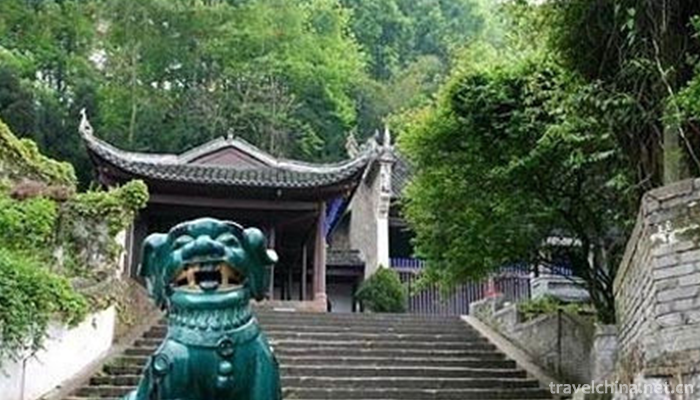
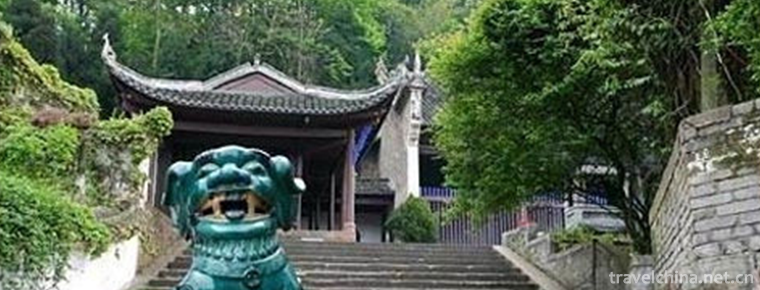
Panhu Legend
-
Jiayuguan cultural relics scenic spot
Jiayuguan: World Cultural Heritage, National AAAAA Tourist Scenic Spot, National Key Cultural Relics Protection Unit, National Patriotic Education Demonstration Base.
Views: 195 Time 2018-12-12 -
Three Parallel Rivers of Yunnan Protected Areas
The three rivers running side by side are Jinsha River, Lancang River and Nujiang River, three rivers originating from the Qinghai-Tibet Plateau, running 170 kilometers from north to south in Yunnan P
Views: 93 Time 2018-12-19 -
Narati Scenic Spot
Narati Tourist Scenic Area, located in Xinyuan County, Xinjiang, is located in the hinterland of Tianshan Mountains, the eastern end of the Ili Valley, with a total planning area of 960 square kilomet
Views: 72 Time 2019-02-07 -
Mount Tai Fonters Happy World
Tai'an Fangte Happy World is located in the eastern New Area of Taishan District, Tai'an City, Shandong Province. Font's Happy World is characterized by science fiction and animation
Views: 397 Time 2019-02-13 -
Xinjiang Tianshan
Tianshan Mountain in Xinjiang, the eastern part of the Tianshan Mountains, is also the main part of the Tianshan Mountains and the world natural heritage. Tianshan Mountain is one of the seven major m
Views: 216 Time 2019-02-25 -
Qinghai Yuexian
Qinghai Yuexian is also called Yuexian, Yueyue Diao, Back Diao, Yueyue Diao, Meihu, etc. Qinghai Vietnamese String is one of the traditional folk songs in Qinghai Province. It can be called the "
Views: 330 Time 2019-06-11 -
Zhoushan gongs and drums
Zhoushan gongs and drums are the representatives of traditional folk art in Zhoushan City, Zhejiang Province. They are based on gongs, drums, cymbals and clappers, with silk bamboo, magnificent sound
Views: 128 Time 2019-08-10 -
Erwang Temple
The Erwangmiao ancient building complex is located at the foot of Yulei mountain outside the west gate of today's Dujiangyan, which is an important part of the world cultural heritage Dujiangyan. The temple was built in memory of Li Bing and his son Erlang. The Erwang temple was first built in the northern and Southern Dynasties
Views: 466 Time 2020-11-08 -
Yulei mountain
Yulei mountain, according to the original note of "Mian County" in the book of geography of Han Dynasty, "the water of Yulei mountain flows from southeast to Jiangyang and enters into the river." In Shuo Wen, the word "Yu" is written as "the water flows out of Sichuan county, Mian Yu Lei, Shandong Province, and enters the river in the south of Shandong Province
Views: 417 Time 2020-11-08 -
Mineral resources in Leshan
Leshan City is rich in mineral resources, 34 kinds of mineral resources have been proved, especially non-metallic minerals, with great development potential. Among them, the total amount of proven rock salt resources is 10.5 billion tons, with an annual
Views: 167 Time 2020-12-17 -
Yibin secondary industry
In 2019, the total industrial added value of Yibin City is 99.082 billion yuan, an increase of 9.5% over the previous year, and its contribution rate to economic growth is 45.5%. At the end of the year, there were 824 Industrial Enterprises above Designated Si
Views: 128 Time 2020-12-18 -
Education in Yibin
In 2019, there will be 11000 students enrolled, 50900 students and 13600 graduates. There are 4 graduate training units, 393 graduate students, 918 students and 68 graduates. There are 17000 students in adult colleges and universities. 43500 pe
Views: 258 Time 2020-12-18
